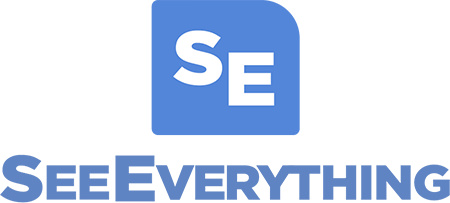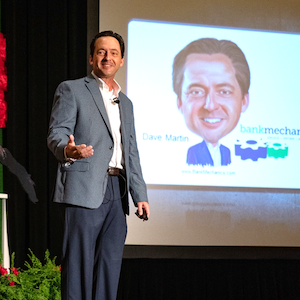 |
 |
"Your present circumstances don't determine where you can go; they merely determine where you start." » Nido R Qubein
"They" Got Problems
Recent interactions in two airports had me reflecting on something I’ve preached to bankers.
I’ve long suggested that on-the-job-training can be some of the most expensive training of all.
Customers pay for it through diminished goodwill.
Employees pay for it through lowered morale.
Businesses pay for it through reduced sales.
It became top of mind recently while interacting with staff at restaurants in two different airports.
In each instance, the staff were completely confused and frustrated with new self-service ordering and payment systems.
The fact that these were two different establishments in two different cities made it all the more notable.
In one case, the first words from our waiter were an apology about their ordering system.
He said, “I’m so sorry that we make y’all use this stuff. We all hate it, but it’s the only way they’ll let us take an order.”
Well, we had to chuckle at the honesty. And, true to his warnings, their system was truly frustrating and difficult to navigate.
Three days later in another airport, we found ourselves trying to decipher another order-by-phone system.
When I asked the overworked waitperson if we needed to use the system, she said, “Please do. They threaten to fire us if we don’t have customers order by phone.”
There was that “they” word again.
An older couple sitting at an adjacent table asked us if we were able to figure out the ordering process. They were also confused.
Before long, several tables were openly discussing the mess.
The kicker was when that server later told us she misses the way they’d always operated before.
Instead of assisting customers in using the system, she complained about how difficult the ordering and payment process had become – while customers struggled to figure it all out.
Some simply left.
Now, I fully realize the potential benefits these new systems offer to these businesses, employees, and customers.
In this case, however, poor training and communications have employee morale and customer experiences taking a beating.
Appropriate training and continuous communication of both small and large changes can be the difference between teams feeling that changes are happening “for them” instead of “to them.”
When that happens, everyone wins.
Driving Off Sales
After showing how low “salesperson” tends to rank on surveys of most trusted professions, I often ask groups, “And who are the scariest salespeople of all?”
Without fail, people shout “Car salesmen!”
Feeling bad about feeding the negative stereotype, I sometimes point out that I have on occasion had very nice experiences when buying a car.
I had to eat those words last week.
After a six month wait, the car we ordered did eventually arrive. Everything on it seemed fine.
Then, my sales buddy tried to convince me that we should have the front windows tinted for just a couple hundred dollars.
He explained, “Hey, Houston is dangerous. If they can see what’s on your seat… bam… broken window!”
I honestly thought he was joking.
He wasn’t. I declined.
Prior to the vehicle arriving, all we heard was how highly rated it was and what great manufacturer warranties came with it.
When we were handed over to the F & I Manager, however, we heard horror stories about how expensive repairs can be and how he would be doing us a disservice if he didn’t recommend the extended warranty.
And how could we not have add-on windshield insurance? The windshields on our vehicle are apparently “stupid expensive.”
After throwing various quotes at us and hearing my polite, “No thanks, I think we’re good,” he said, “Give me a minute. I think I can get you approved for an even better price on that extended warranty.”
Every bit of me wanted to ask why didn’t he offer his best price first, but I knew the answer.
In other circumstances, I may have actually considered additional coverage.
We’ve bought it before in other situations. Fear tactics and borderline dishonesty, however, ensured that wouldn’t happen.
And by that point I just wanted to check that I still had my wallet and watch on me and drive out.
These folks managed to sell us the exact product we wanted… at a fair price... and managed to leave us vowing to avoid that place going forward.
Most bankers would read this (stereotypical) car sales story and think, “No worries. That’s not us.”
And you know what? They’re likely right.
Always be aware, however, of what we’re focused on when a customer is in front of us.
Are you focused on their goals… or yours?
Focus on theirs and you’ll remain on the road to success.









